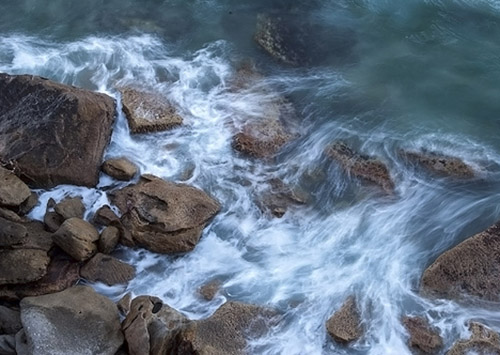This is the time of year when drought drops from the headlines in all but the warmest parts of North America. Crops aren't withering in the sun; few homeowners worry about lawn-watering restrictions. Until the weather heats up in the spring, the weather headlines will be mostly about winter storms. But that doesn't mean moisture deficits have been resolved. National drought maps reveal that persistent drought is plaguing California, the central Plains states, and, to a lesser extent, the East Coast.
 |
| Water Harvesting |
Looking more widely, the past eighteen months have seen a global outbreak of emergency water rationing in the face of sudden, extraordinary scarcity. In a diverse group of countries, including the Dominican Republic, Venezuela, Australia, Kenya, Ghana, Tanzania, Zimbabwe, South Africa, India, Pakistan, China, Taiwan, Malaysia and the Philippines, a wide variety of rationing plans have had to be put into practice. Rationing has even become necessary in normally moist, green places, most prominently the United Kingdom, Ireland and New Zealand. In many situations, the causes of water shortages have been much more complex than routine drought or high population density. Thanks to greenhouse emissions, local climates are becoming increasingly fickle.
A whopping 86 percent of the world's total fresh water consumption is accounted for by production of food, fiber and other agricultural products, and 9 percent is attributable to industrial production. Farms dominate water use in the United States as well. But even though a scant 5 percent of the global footprint is residential water use, it is in the domestic supply where shortages are felt most immediately and most intensely by the majority of people.
When municipal or county water supplies are tightened, lucky residents with wells are able to supply themselves (at least until the well also goes dry). And increasingly, people in drought-prone areas are planning ahead and capturing rain for future use. A dozen states and the US Virgin Islands now have laws regulating, and for the most part encouraging, rainwater harvesting. In this, Texas leads the nation. In 2009, Colorado partially lifted a longstanding law that had banned homeownersfrom collecting rainwater off their own roofs. Utah repealed a similar ban in 2010. The state of Oregon publishes a guide to rainwater rainwater collection (PDF). (Hysteria a couple of years ago over the conviction of an Oregon man for water harvesting was unwarranted; he had built a vast system of reservoirs with a capacity of 13 million gallons—a bit more than is needed for personal use.)
Meanwhile, most of us are still stuck with paying for our residential water supply. And any economist can show you how the most efficient method of allocating water is "marginal cost pricing", under which the first gallon per week or month is the most valuable and expensive, with the cost falling as consumption rises. That, however, penalizes low-income households and rewards heavy consumption. Therefore, many municipalities across North America and the world have turned marginal cost pricing on its head. Under what are called increasing block tariff systems, each household has a monthly right to an initial "block" of that is free or very cheap, with the price escalating sharply for subsequent blocks.
But there will always be a wide gap between what it costs to provide municipal water and what many residents can afford to pay for it. Treating water as a market commodity almost inevitably leads to conflict, and water-privatization schemes have repeatedly failed.
Talk of looming worldwide conflict over water resources has been going on for years. But it is often conflict itself - state versus state, class versus class, neighbor versus neighbor and, increasingly, humanity versus nature - that triggers water scarcity in the first place. The only long-term solution is to resolve such conflicts, to ensure that every community has an adequate water supply. But even then, resources may not be bountiful, and rationing by some means other than willingness (and ability) to pay will be necessary.
If we cannot manage to conserve and share water fairly, there is little chance that we will manage share other resources fairly. Enforcing the right to water is, or at least should be, less complex and contentious than ensuring rights to, say, energy, food, or medical care. As Maude Barlow concluded in her 2007 book Blue Covenant: The Global Water Crisis and the Coming Battle for the Right to Water, "If ever there was a time for a plan of conservation and water justice to deal with the twin water crises of scarcity and inequity, now is that time. The world does not lack the knowledge about how to build a water-secure future; it lacks the political will."
Meanwhile, you might as well get a couple of rain barrels going. More
Photo by Wikimedia Commons/Sustainable Sanitation Alliance
Stan Cox is a senior scientist at The Land Institute in Salina, Kansas, and author most recently of Any Way You Slice It: The Past, Present, and Future of Rationing(The New Press, 2013).



